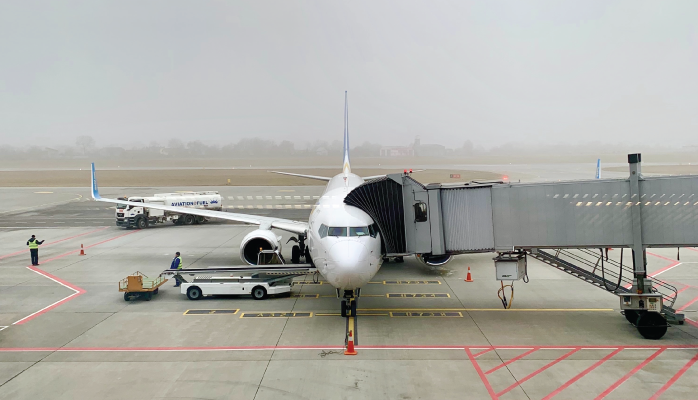What REALLY Is Continuous Improvement in Aviation SMS?

The objectives of every aviation safety management system (SMS) is to:
- Proactively manage safety in a formal, structured manner;
- Identify potential operational hazards;
- Determine risk to operations and affected stakeholders; and
- Implement control measures to mitigate identified risks.
From a regulator's perspective, they are primarily interested in:
- Whether your company has implemented all required SMS elements; and
- Whether you can demonstrate continuous improvement of your aviation SMS.
Related Articles on Continuous Improvement for Aviation SMS
- FAA Part 5 Compliance | Safety Assurance Continuous Improvement
- What Continuous Improvement Compliance Looks Like in Real SMS
- How to Be Compliant With Continuous Improvement of SMS
Continuous Improvement Belongs to Safety Assurance Component
"Continuous improvement of the SMS" is one of the three primary elements of the Safety Assurance component of an aviation SMS. The safety assurance component on an SMS was purposefully designed into the aviation SMS framework to ensure that the SMS continues to function as designed, including:
- Policies and procedures;
- Risk management processes;
- Risk controls; and
- Safety promotion activities.
Continuous improvement’s goal is the constant progression of safety performance in a positive direction as the SMS implementation continues. As every safety professional knows, an SMS doesn't simply fall from the sky and your SMS problems are magically fixed. An SMS implementation is the result of years worth of planning and modifying organizational attitudes toward the way business is conducted in the safest way possible.
Safety performance is a combination of:
- Effective aviation safety culture;
- SMS compliance (which happens through SMS implementation and effective oversight); and
- Implementing effective control measures.
Can an Aviation SMS Performance Improve Forever?

Now, “progression of safety performance" is an extremely important phrase. Continuous improvement is a daunting – and sometimes demoralizing – thought because of the nagging question:
- How can the SMS improve forever?
- To which, the obvious reply is that it’s impossible.
The key component of continuous improvement is not that performance metrics get better forever, but that:
- SMS implementations continue to adapt to changes in the operational environment, whether these changes are environmental, compliance, technological, etc.
At a certain point, areas of aviation SMS performance (i.e., safety reporting culture or responsiveness to addressing safety concerns), will max out to eventually offer diminished returns on the invested effort. After all, there will always be a finite number of safety concerns that can be identified and reported by employees and stakeholders. Furthermore, there will be a limit to the "level of safety" that can be gained by speeding up your SMS risk management "machine."
In the examples above, if you were focusing on being responsive to managing safety concerns, there will also come a point where your SMS is "good enough." After all, if you are closing reported safety issues within seven to fourteen days, what noticeable improvement in operational safety occurs when you shave these numbers down even further? Maybe none. However, if your risk management processes require 60 to 90 days to manage reported safety concerns, this "lackadaisical attitude" may adversely affect your safety culture.
Your aviation SMS will always be affected by the law of diminishing returns. This is good, so don't be overly concerned in the long run about processing hundreds or thousands of reported safety issues with no end in sight. However, there will be no end to the changing safety landscape – and this is the "ever-evolving environmental realm" that an aviation SMS' continuous improvement element addresses. In this context, continuous improvement aligns very closely with how well your organization can manage change.
Related Management of Change Articles
- What Is Management of Change in Aviation SMS
- Understanding Management of Change in Aviation SMS
- What Are Best Practices for Change Management in Aviation SMS
Aims and Improvement Areas
The primary aim of continuous improvement in aviation SMS is to establish:
- Where is safety performance not performing optimally;
- What are the causes of such under-performance; and
- What are the safety implications in the operational SMS environment?
The aims of continuous improvement in aviation SMS should be applied to three general areas of operations:
- Bureaucracy, such as facilities, equipment, documentation, and procedures;
- Individual performance (i.e., employee performance monitoring);
- Systems of control, such as control measures.
How KPIs Demonstrate Continuous Improvement

Key performance indicators (KPIs) are among your primary tools for demonstrating continuous improvement. Selecting KPIs is process-driven in response to your company's safety goals and objectives. Goals and objectives will naturally evolve and adapt in response to changing environmental needs, both internal and external.
So as long as the following two things are being done, KPIs should always reflect the most important areas of continuous improvement for your company. These two things are:
- Goals and objectives are regularly reviewed, updated, and fine-tuned; and
- KPIs are modified as safety goals and objectives change – which is a central tenant of KPI best practices.
Of course, the presence of carefully chosen KPIs reflects active organizational safety performance monitoring. There will be other areas of your SMS implementation that need to be monitored as well, which are covered under other continuous improvement activities.
Related Aviation Key Performance Indicator (KPI) Articles
- What Is a Key Performance Indicator (KPI) in Aviation SMS? - With Free KPI Resources
- 6 Sources for Aviation Key Performance Indicators
- 3 Goal-Setting Tips Using Aviation Key Performance Indicators
Continuous Improvement Activities
Beyond selecting good KPIs, several other activities help you demonstrate continuous improvement of the aviation SMS. Some of these activities include:
- Reviewing and updating the aviation SMS' gap analysis;
- Identifying leading and lagging indicators that are aligned with safety goals and objectives;
- Tracking SMS implementation progress;
- Employee safety performance monitoring;
- Average end-of-course scores for aviation risk management training;
- Drafting and distributing lessons learned from internal and external safety events;
- Regularly bench-marking organization's SMS activities and safety performance to your specific industry segment;
- Sharing safety information with other similar types of organizations;
- Conducting safety culture assessments to determine shifts in safety perspectives;
- Other internal evaluations, such as internal audits; and
- External audits.
All tools can be utilized to demonstrate the scope of your continuous improvement activities that are:
- Quantifiable;
- Trackable and hopefully "trend-able" over prolonged periods of time; and
- Accurate.
Best Practices for Demonstrating Continuous Improvement

Here are a few best practices when it comes to continuous improvement in aviation safety management systems:
- Evidence of lessons learned incorporated into safety policy;
- Evidence that lessons learned affect operational procedures;
- Company benchmarks SMS' safety performance against similar companies within the aviation industry, such as by normalizing rates;
- Surveys of safety culture are carried out regularly and acted upon;
- History of safety promotion activities remains easily accessible and correlates with increased SMS activity;
- Hazard register is reviewed and regularly updated; and
- Evidence that contractors and other interfaces participate in the SMS to help identify hazards, assess safety risks, and determine appropriate risk controls.
All of the above points should be integrated as a standard of continuous improvement. However, demonstrating continuous improvement over prolonged periods of time can be difficult unless the operator has an effective SMS data management strategy. I'm sorry, but spreadsheets are cumbersome, and the best tool to demonstrate continuous improvement is a low-cost, commercially available SMS database.
Related Aviation SMS Database Articles
- What Is an Aviation Safety Database for SMS Implementations?
- 7 Signs You Need an Aviation Safety Management (SMS) Database
- How to Choose the Best Aviation Safety Database Software
Demonstrating Continuous Improvement Supported by SMS Database
Safety performance monitoring at the employee level is probably the most overlooked element of continuous improvement because it's hard to implement. Most aviation service providers don't have a robust SMS data management strategy to easily collect, store, and retrieve safety data.
There is a reason that EASA requires that operators store their reported safety data in databases and not in spreadsheets. Spreadsheets may be ubiquitous in every business enterprise; however, they are not suitable for storing dynamic safety data and easily mining this data for trends.
If you are not convinced, there are three SMS risk management activities that you will not want to perform, year after year, using a spreadsheet, and they are:
- Demonstrating continuous improvement;
- Setting and monitoring safety KPIs; and
- Identifying trends in your predictive risk management processes.
If your organization is not using an SMS database to store and manage SMS documentation requirements, I'm certain that your safety manager becomes increasingly anxious whenever there is an SMS audit, or whenever upper management requests charts and reports to monitor safety performance.
The Final Take-Away — the Hard Truth
If your company is very small, demonstrating continuous improvement becomes more difficult. This is unavoidable because smaller organizations lack the volume of safety inputs, i.e., reported safety issues and audit findings.
Very small companies are not expected to demonstrate continuous improvement at the same level of detail as mid-sized and larger operators that are exposed to higher levels of risk. However, this does not exempt smaller companies from demonstrating some semblance of continuous improvement. SMS requirements remain the same for all aviation service providers. The complexity of your SMS is relative to the size and complexity of your operations.
If you become anxious thinking about how you can effectively demonstrate continuous improvement to aviation SMS auditors and other SMS professionals, I urge you to reconsider your SMS data management strategy. If you have not yet adopted an SMS database, you should not delay. Companies with more than forty employees or smaller companies with high employee turnover will benefit from the adoption of an SMS database to
- Collect safety reports;
- Manage risk management process (corrective actions and investigations);
- Deliver and document SMS training;
- Set and monitor KPIs tied to your safety goals and objectives;
- Deliver and track safety promotion messages;
- Monitor safety performance; and much more.
To learn how your company can benefit from an SMS database, please watch these short demo videos:
Last updated December 2025.








